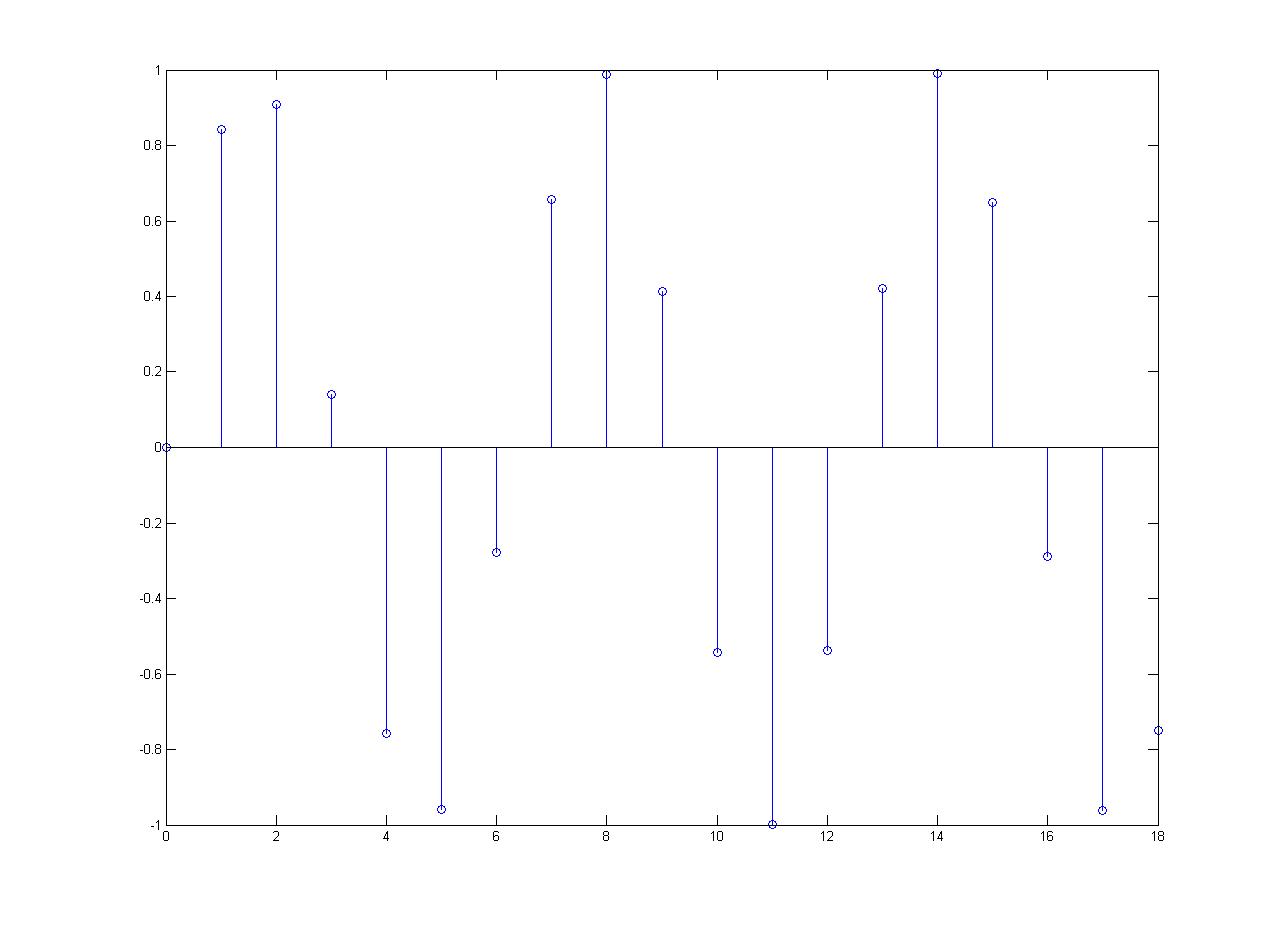| Line 15: | Line 15: | ||
[[Image:Samp pi_ECE301Fall2008mboutin.jpg]] | [[Image:Samp pi_ECE301Fall2008mboutin.jpg]] | ||
| − | As can be seen from the graph, the values of x[n] are periodic because they repeat after every period of <math>t = 2\pi</math> | + | This discrete time signal was produced from a CT sine wave by sampling at a frequency of <math>\frac{1}{\pi}</math>. |
| + | |||
| + | As can be seen from the graph, the values of x[n] are periodic because they repeat after every period of <math>t = 2\pi</math>. | ||
| + | |||
| + | Therefore, <math>x[n + 2\pi] = x[n]</math> | ||
==Non Periodic Signal== | ==Non Periodic Signal== | ||
Sampling every t = 1 | Sampling every t = 1 | ||
[[Image:Samp1_ECE301Fall2008mboutin.jpg]] | [[Image:Samp1_ECE301Fall2008mboutin.jpg]] | ||
| + | |||
| + | For this discrete time signal which was produced by sampling the same sine wave at a frequency of 1, the values of x[n] are non-periodic because <math>x[n + k] \neq x[n]</math> | ||
Revision as of 07:57, 11 September 2008
1. Creating two DT signals (one periodic and one non-periodic) from a periodic CT signal
Let x(t) = sin (t), which is a periodic CT signal
Periodic Signal
This discrete time signal was produced from a CT sine wave by sampling at a frequency of $ \frac{1}{\pi} $.
As can be seen from the graph, the values of x[n] are periodic because they repeat after every period of $ t = 2\pi $.
Therefore, $ x[n + 2\pi] = x[n] $
Non Periodic Signal
For this discrete time signal which was produced by sampling the same sine wave at a frequency of 1, the values of x[n] are non-periodic because $ x[n + k] \neq x[n] $





